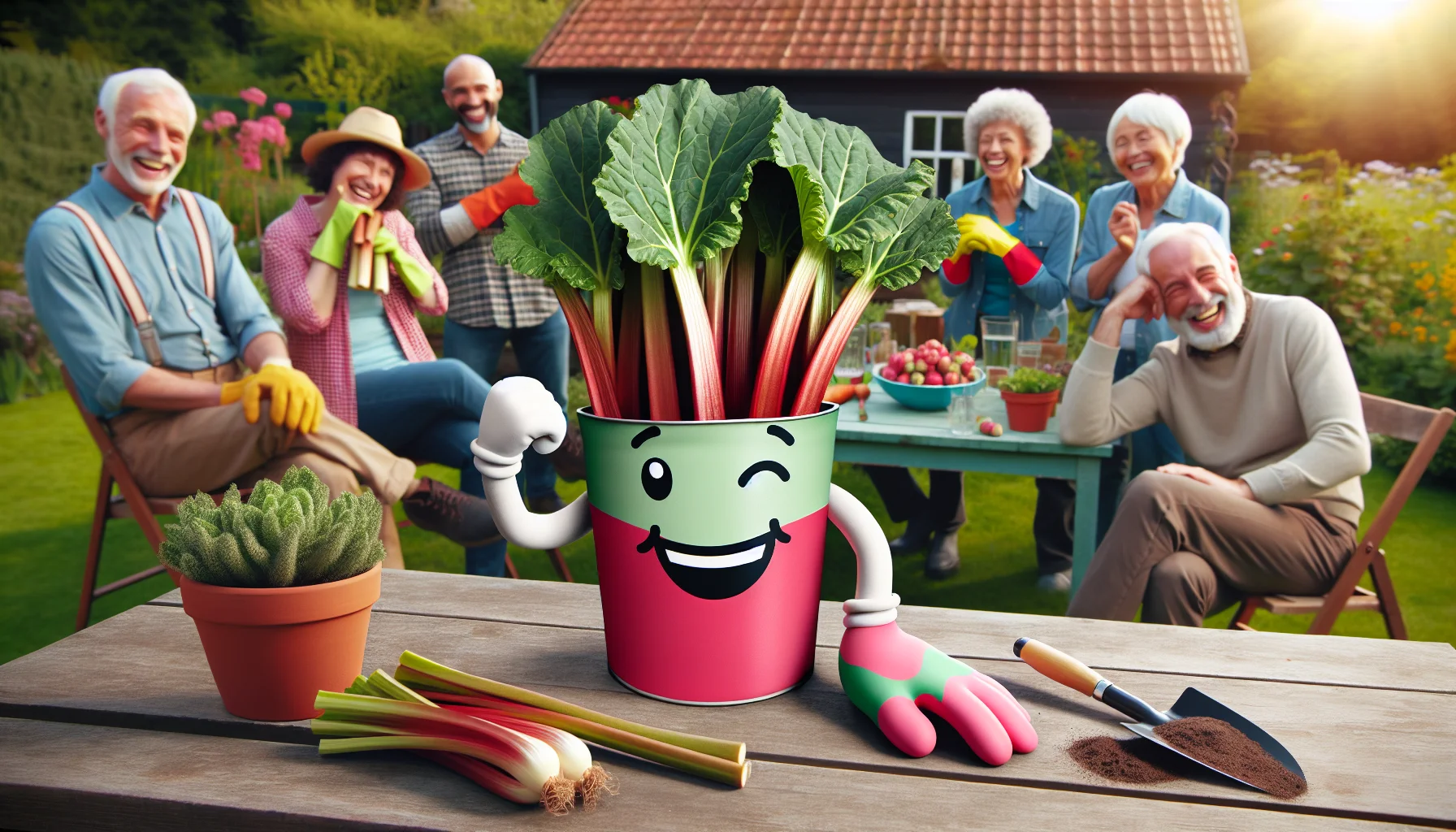Fertilizer for rhubarb Quiz
Test Your Knowledge
Question of
The Best Fertilizer for Rhubarb: Boosting Your Harvest
Choosing the right fertilizer for rhubarb is crucial in gardening to ensure a bountiful and healthy harvest. The right nutrients not only enhance the growth and vigor of rhubarb plants but also improve the quality and taste of the harvest. Understanding which fertilizer best suits rhubarb can make a significant difference in the success of your gardening efforts.
Understanding Rhubarb Nutritional Needs
Rhubarb plants thrive when provided with a balanced diet of essential nutrients. For optimal growth and production, they primarily require nitrogen (N) to promote leafy growth, phosphorus (P) to support root development, and potassium (K) for overall plant health and disease resistance. Additionally, incorporating organic matter into the soil can improve its structure, providing rhubarb with better access to these nutrients. Regular applications of a balanced, all-purpose fertilizer can also help meet their nutritional needs, ensuring a bountiful harvest of rhubarb stalks.
Organic vs. Synthetic Fertilizers for Rhubarb
When cultivating rhubarb, gardeners often debate whether to use organic or synthetic fertilizers to achieve the best growth and yield. Organic fertilizers, derived from natural sources, are rich in nutrients and improve soil structure over time. They release nutrients slowly, reducing the risk of over-fertilization and encouraging healthy, steady growth of rhubarb plants. However, organic options may have variable nutrient ratios and can be more expensive and less readily available than their synthetic counterparts.
Synthetic fertilizers, on the other hand, offer precise nutrient ratios and are immediately available to the plants, promoting rapid growth. They are generally more cost-effective and easier to find. However, they can lead to nutrient leaching, potentially harming the environment. Overuse of synthetic fertilizers may also result in salt buildup in the soil, which can damage the rhubarb plant's root system and reduce soil quality over time.
In conclusion, both organic and synthetic fertilizers have their pros and cons. The choice between them should be based on the gardener's priorities, whether they are soil health, plant growth speed, cost, or environmental impact.
Top Recommended Fertilizers for Rhubarb
- Composted Manure: Rich in nutrients, it improves soil texture and fertility, making it an excellent all-around choice for rhubarb.
- Bone Meal: High in phosphorus, it promotes healthy root development in rhubarb plants.
- Fish Emulsion: A fast-acting, nitrogen-rich option that boosts leaf growth and overall plant health.
- Seaweed Extract: Provides a wide range of nutrients and trace elements that help improve yield and resistance to pests.
- 10-10-10 Balanced Fertilizer: A general-purpose fertilizer that provides an equal ratio of nitrogen, phosphorus, and potassium, suitable for all stages of rhubarb growth.
How to Apply Fertilizer to Rhubarb
Applying fertilizer to rhubarb plants is crucial for ensuring their healthy growth and a bountiful harvest. The best practice is to start by enriching the soil with a generous amount of well-rotted manure or compost in early spring, just as the plants are starting to grow. This provides the rhubarb with a slow-release source of nutrients. Additionally, a balanced 10-10-10 NPK (Nitrogen, Phosphorus, Potassium) fertilizer can be applied lightly around the base of the plants, being careful not to get any on the crown to avoid burning it. This should be done when the plants are actively growing. For an ongoing boost, you can apply a side dressing of compost or a more diluted liquid fertilizer every 4-6 weeks during the growing season. Always water the area well after applying fertilizer to help distribute the nutrients into the soil. Remember, too much fertilizer can harm your rhubarb, so it's important to follow the recommended amounts and not over-fertilize.
Common Mistakes to Avoid When Fertilizing Rhubarb
- Applying fertilizer too early in the spring before the plants have fully emerged.
- Using a fertilizer that is too high in nitrogen, which can encourage leaf growth at the expense of the stalks.
- Fertilizing rhubarb late in the season, which can stimulate new growth that will be too tender to survive the winter.
- Not testing the soil first to determine its nutrient needs, leading to over or under-fertilization.
- Applying fertilizer directly on the crown of the plant, which can cause burning and damage to the rhubarb.
- Ignoring the importance of compost or well-rotted manure as a natural, balanced source of nutrients for rhubarb.
- Forgetting to water the plants after fertilizing, which can result in fertilizer burn or ineffective nutrient uptake.
- Overlooking the need to adjust fertilization practices based on the age of the rhubarb plants.
Frequently Asked Questions About Fertilizing Rhubarb
| Question | Answer |
|---|---|
| When should I fertilize my rhubarb plants? | It's best to fertilize rhubarb in early spring before the plant breaks dormancy and again when the plant starts to die back in late fall. |
| What type of fertilizer should I use for rhubarb? | A balanced 10-10-10 fertilizer is recommended for rhubarb plants. Organic options like compost or well-rotted manure can also be very beneficial. |
| How much fertilizer does a rhubarb plant need? | Apply about 1/2 cup of balanced fertilizer per square yard in the spring. If using compost, a 2-inch layer spread around the base of the plant is sufficient. |
| Can over-fertilizing harm my rhubarb plants? | Yes, over-fertilizing can lead to excessive leaf growth at the expense of the rhubarb stalks and can also increase the risk of root rot. |
| Should I water my rhubarb plants after fertilizing? | Yes, watering after fertilizing helps to distribute the nutrients into the soil and ensures that they reach the roots of the plant. |












